Recreating the Bront毛s' world in To Walk Invisible
Charley Stone
Previews & Promo Clips Assistant
Tagged with:
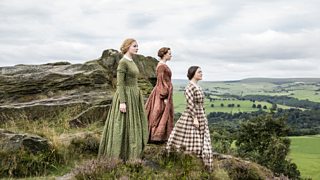
Sally Wainwright's new drama To Walk Invisible takes a new look at the Brontë family, three remarkable women who came from obscurity to produce some of the greatest novels in the English language. Charley Stone spoke to production designer Grant Montgomery to discover how the Brontës' world was recreated for the series.
Three strong Yorkshire women, living in a remote place with a brother who goes off the rails… sounds like the plot for a Sally Wainwright (Happy Valley, Last Tango In Halifax) drama, right? Correct: is her story of the Brontë sisters, and their rise from obscurity to become the renowned authors of works such as Wuthering Heights and Jane Eyre.
I recognised Haworth parsonage, the Brontës’ home, right from the opening scenes, having visited there many years ago. But how do you get permission to shoot a film over several weeks in what is now a working museum? Well, you don’t. Instead, the interior of the house was recreated in a studio in Manchester, but the famous exterior and surroundings were built on a car park about half a mile outside Haworth – on a fake hill!
“The parsonage is on a hill, and it had a very particular gradient, so we had to build some of the hill on a huge scaffold rig,” explains production designer Grant Montgomery.
“There’s a shot at the start of the film, where Charlotte Brontë is going up to the house, and she’s going past the graveyard, and all the flagstones are wet – that’s all fake. It’s real flagstones that we put down, but it’s not a real location – it’s an MDF skin over a scaffold rig, with a house on top.”
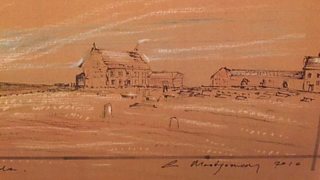
Exterior set sketch
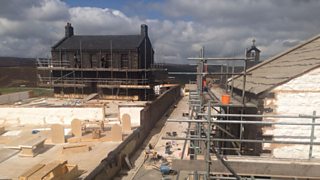
Exterior set build
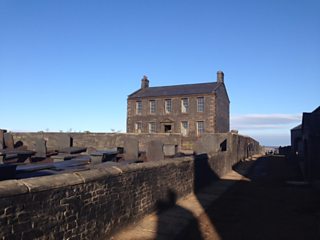
Exterior set once built
Not just the house, but the graveyard and the side of the church, as it would have been during the Brontës' lives, together with another house and barn which no longer exist, were all created on the makeshift hill.
“The walls are plaster walls painted to look like stone – and you’ll notice there are no trees, because the trees were planted after the Brontës, when the Reverend Wade took over the parsonage after Patrick Brontë died. We shot down a bit of actual Haworth street, but we changed all the shops back to the exact shops that were there at the time.”
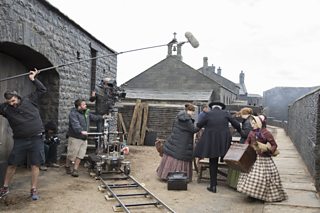
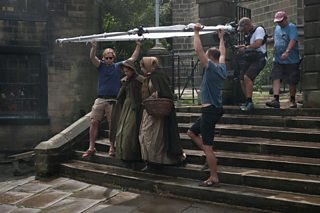
The shop fronts for To Walk Invisible
Grant explained how they had 12 weeks to research and prep everything before filming began, and how every detail had to match the house as it was when the Brontës were living there.
“Because it’s such an iconic literary shrine, you have to get all of that detail right. It was in Sally’s script, that it was the parsonage without the Wade extension, so you couldn’t really do it any other way but to actually go and build it from scratch. For example, the size of the hallway is wider in our film, because Charlotte made her bedroom and the parlour larger after the death of Anne.”
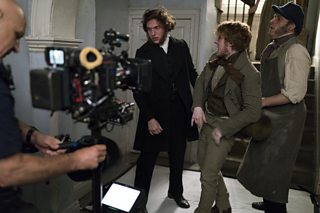
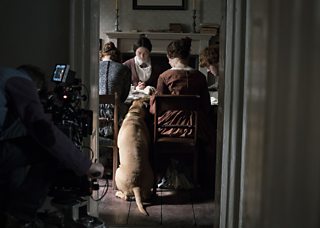
“Sally wanted that authenticity. We built the piano in the front room that Emily played, because it’s a very distinctive piano. We recreated all the books that were on the bookshelves, and all the pictures on the wall, and all the flagstones in the hallway were measured exactly from the original parsonage, and even the handrail.
“But Sally wanted it to feel like it was a house that people actually lived in, so there are scratches and bashes on the woodwork. And I wanted the audience to feel that it was real, as real as we could make it.”
Watching the film, I did feel totally immersed in the Brontës’ world, and it gave me new insight into their inspiration.
“Being at the set build when snow would come through, rain would come through – because you’re really high up, amongst the moors, which gives it an incredible look. And you began to understand why they wrote what they wrote, remembering descriptions of them all sitting in the parlour, when they could hear the wind howl outside the house, and you suddenly realise they were right at the top of Haworth, looking right out onto the moor. So why wouldn’t they be writing things like Wuthering Heights and Jane Eyre?”

Set panorama as the build is in progress

Set panorama when the set is complete
“Sally’s written a great script, I loved reading it. I kept re-reading it while I was making it and thoroughly enjoying it. It was a great journey to take. It was a privilege, I really mean that - it was an extraordinary piece of work to do. I’d always wanted to film a Brontë story - I think they’re an amazing family - and I kept thinking ‘I really want to meet them!’. I just hope everyone enjoys it.”
